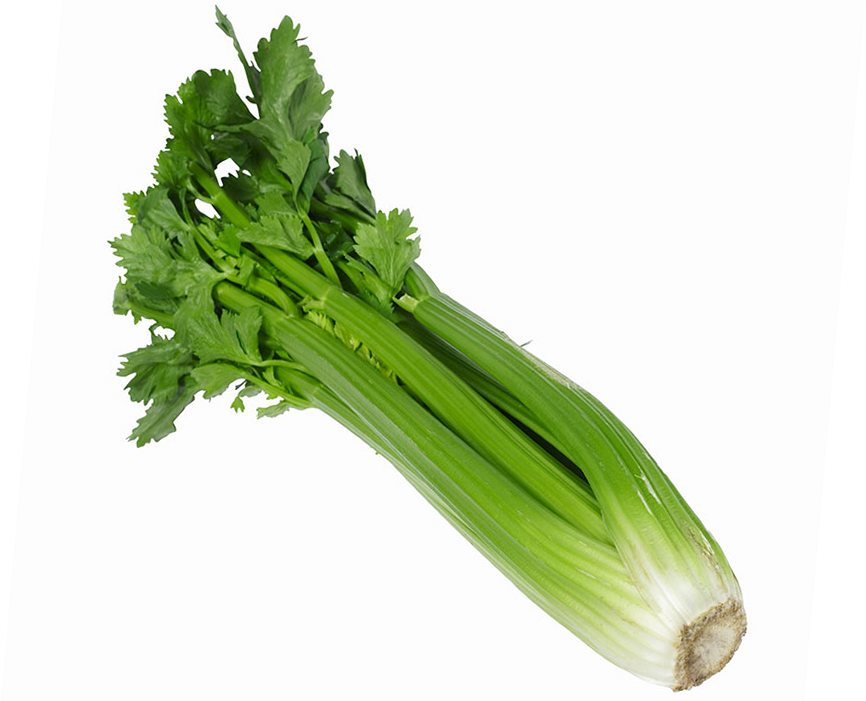It is either you buy celery in pricy, tiny single stalks or inexpensive, huge bunches. When you buy the pricier, tiny single stalks, the leaves would have been removed which is why it is more expensive because the local stores want to make you believe that they have done the work of pulling the leaves off. Meanwhile, removing the leaves means you are being deprived of the fresh lovely leaves that will add a lot to your meal.
Any time you want to buy celery, you should opt for the big bunch that still has the leaves intact. You will be enjoying a very nutritious and delicious meal when you add the leaves to your meal. Whenever you find yourself in a situation that you are unable to eat an entire bunch before getting spoilt, you will wonder if it is possible to freeze the leaves.
Celery leaves can be frozen but because the leaves contain water in a high amount, they can be easily broken down after freezing. The flavor and nutrition will still be the same, however, the crunchiness will completely disappear. You will still get a great result cooking the leaves but you will not enjoy it raw. We want to check out everything you need to know about celery, how to freeze, and also to use the leaves.
Edible Parts of Celery
You can eat nearly everything concerning celery from the root to the leaves, seeds, stalks, and stems. You will find different types of celery that are grown specifically to use its different parts. Celery in bunches can be full of leaves, however, some are grown to be consumed for the stalks while others for the leaves and then the seeds. Celery leaves are similar in flavor to the wild celery, perfect for your recipes being more potent.
Celery Leaves Nutrition
You can consider celery to be a common diet that is classified to be almost calorie-free. Each of the stalks has about 10 calories giving you something to enjoy. Despite being low in calories, it is high in nutrition. It is fully packed with flavonoids and antioxidants, minerals like folate and potassium, vitamins K, C, and A.
You will enjoy the high content of calcium in the leaves and it also contains a high amount of water helping you to add water to the body. Celery has also been found to be a very efficient alkalizer. When you compare it to some high-sugar or fried foods that are very acidic causing digestive distress, celery helps to rebalance your pH when you take it with cream cheese or nut butter.
How to Freeze Celery Leaves
You can easily freeze celery leaves. They are needed to be well washed before freezing them and they must also be completely dry before undergoing the process. There must be no water hiding on the leaves because when it defrosts, any water that has been hiding on the leaves will affect the celery’s quality.
Celery leaves can either be frozen chopped up or whole:
- If you will be freezing the leaves whole, spiral and twist them gently together after they’ve been dried completely so that they will be in cigar or tube shape.
- Put them into your freezable Ziploc bag ensuring that all excess air escape.
- When you want to use a portion of the leaves and you are not trying to use the entire leaves, all you need to do is to chop a portion and return the remaining to your freezer.
- If the leaves have been chopped before you place them inside the freezer, you need to first freeze the leaves individually.
- If you want to do this, line your baking sheet with parchment paper and spread the leaves in single layers.
- Put the whole tray inside the freezer for about an hour so that they will all be frozen completely.
- You may then directly transfer them into a freezable Ziploc bag. This should be done quickly to prevent the thin leaves from thawing.

How to Freeze Celery
Whenever you want to freeze your celery stalks, you should wash and then dry each of them carefully and thoroughly. You have a choice to either freeze them chopped up or whole. Celery will usually not end up crispy and nice after being frozen, you can only use it to cook, make juice, or perhaps, blend it into smoothies immediately you have thawed it.
For all purposes, it is easier and best to chop the celery when it is still crispy and fresh than when it has become soft and wimpy from the freezer. First, freeze individual pieces as outlined in the second step above. Then, transfer them into a freezable Ziploc bag. A container that has an air-tight lid can also be used but you will find it much easier for air to escape from a bag.
How to Thaw Celery or /and Celery Leaves
Celery thaws quickly from frozen, however, you can use it directly from frozen without thawing. Your frozen celery can be added to your smoothie or some other blended meal. You may also add the frozen celery into your pot, casserole, slow-cooker, or other dishes if you want to cook with it.
There is nothing much about celery, defrosting is done within minutes that you brought them out of the freezer. In case you want it to defrost at all, just allow it to remain on your plate for 10 to 15 minutes at room temperature and you will get it completely defrosted.
How to Use Celery Leaves
Celery leaves are commonly used for either salad or soup. These two ways are the reasonable ways they are used. However, after they have been frozen, they are likely not to be pleasant for salad. You can use the fresh leaves to make a very beautiful garnish.
It could also be used to alternate for cilantro and parsley in nearly any recipe though their flavor is different. You can also blend them into dips, pesto, and spreads such as hummus. Celery leaves can also be added sto your dressing if you are making it yourself.
Frozen celery leaves should be used to cook. They can be added to casseroles, pasta dishes, stir-fry, stew, and soup. Frozen celery leaves can also be blended into juice or added to your smoothie to make it tangy.
How to Choose the Best Celery Leaves
Any time you want to shop for celery, get bunches of celery that have very nice, fully dark leaves found on outer stalks. Your leaves will be tougher the darker they are when you bought them and you can save them for freezing and cooking if you want to. When you move closer to your bunches of celery, the leaves will be noticed to be lighter and much tenderer. These leaves are best to be eaten fresh immediately. A lot of people discard this deliciously fresh and bright delicacy too easily not knowing what they are missing out on.
Related Questions
Are celery leaves poisonous?
Celery leaves may become eventually toxic to the health if eaten without eating anything else for months. However, you will have to have grossly over-consumed them for them to be very dangerous unless of course, you are allergic to it. In cases like that, you will notice symptoms that are similarly connected to allergies to pollen. If you can eat celery reasonably, nothing is poisonous about it.
How do you dry celery leaves?
If you want to dry celery leaves, begin by washing them very well before you thoroughly use a paper towel or soft towel to dry them. You may then use a dehydrator by simply laying the leaves singly and setting the dehydrator by following the instructions on the machine. At a temperature of 135°F, it is likely to take up to 5 to 6 hours before they become nicely crispy.
However, in the absence of a dehydrator, it is possible to air dry your celery leaves:
- Proceed as we suggested previously washing and then drying them. Lay them in single layers on your drying rack.
- Ensure they are placed in a very dry place that they will not get tainted by bugs or moisture.
- After two days, flip them to the other side.
- Your celery leaves should’ve become dry enough for the stem to crumble after about four or five days.
- You can still allow the pieces to remain on your drying rack for one more day using parchment paper to cover it if needed. After that, you can then pack the outcome into an air-tight small container or Ziploc bag.
If you store them well by placing them in a dry and cool place, they should last for about one year. However, they will be most potent within six months and may begin to lose their flavor after then.
Can you freeze celery juice?
Celery juice is best taking fresh, but you can freeze it. If you cannot use the juice within two to three days, the best method to preserve nutrition is to freeze it. If you want the best outcome, freeze the juice inside single-serving freezer-safe Ziploc bags. You will want to completely lay them flat inside the freezer until they become solidly frozen. After then, you may allow them to stand if you want to save up space.


